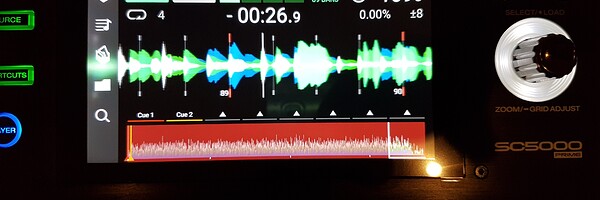I am not impressed with the lack of clarity about how to get this done. Library migration should be the most important thing if we are going to be changing our riders. If there is no straight forward way to do this there is no way in hell anyone will migrate.
Its the one thing that’s keeping people from switching Software, not to talk about going hardware only.
Even if the Prime Series have a “make me an amazing dj button” it won’t be enough to drive the change.
So I spent last night working it out and these are my results entirely from trial and error with no guidance.
I’m a Mac user and my Serato tracks are on an external hard drive. My Serato hard drive and Music folders both have the “serato” folder.
-
I started fresh by formatting my DENONPRIME USB device/drive in FAT32 using Disk Utility. It’s a standard hard drive by WD. 500gb and USB 2.0.
-
I opened up Serato DJ and created new crates in Serato for the Files i want to move. eg if I already have a Crate in Serato called “hip hop bangers” , so I made a new one and gave it a name. I called it DENONPRIME HIPHOP BANGERs.
-
I dragged all the tracks or just the ones i want to use from from the Old Serato Hip Hop Crate to the new one i just made.
-
I did this for a few crates. HIPHOP, House, Afrobeats, Dance hall etc.
-
I quit Serato DJ
-
I launched the Engine Prime software.
-
I turned off Auto analyse. This is very important. If Engine Prime auto analyse you will loose you cue points from Serato.
-
I refreshed Serato Library in Engine. This will take a while if your Serato Library is massive. I have about 57k tracks in my Serato, both music and MP4 videos so it took close to an hour to refresh the library in Engine Prime.
-
Make sure you wait till it completes the Reading Tag information. That’s the longest bit of the process. I just left mine to run and went to bed.
-
Create CRATES or PLAYLIST in the Denon Prime USB (under Devices) using Engine Prime for the new Crates you made in Serato. You will see them included in your Serato Library tree in the Engine Prime. Serato Library is the 4th icon under the search box. It doesn’t have to be the same name as the ones in Serato.
-
Now Copy the tracks from your Engine Prime Serato crates - the one you made in step 1 - to the crates/playlist on the USB you made in step 10.
-
After the Crates are packed, DO NOT BATCH ANALYSE YOUR USB OR YOU WILL LOSE THE CUES.
-
To check if you were successful. Double click any of the PACKED tracks, it will load in the engine Prime software to play and it will show up the hot cues. When it’s loading up the track will also be analysed.
-
If you have the time maybe you can click each track individually and build the beatgrid. If you use the batch analysis you will loose your cues points from Serato. If track is analysed as you load it on the player, cue points remain.
-
You can also drag files into the COLLECTION on the USB stick.
-
Another alternative is to Make a new Crate in Serato with all your music instead of multiple crates. So make a Crate in Serato like MY ENTIRE LIBRARY or ALL MY SERATO. Then go to step 3.
-
Dont forget you must not batch analyse nor auto analyse the library you just made on the USB.
Observations and Cons
You won’t have beat grid made, but the Engine Prime player will analyse and make them when you load up the track, or you can use the player in the software to achieve that too by just loading the track.
I will continue to explore was to fine tune the process.
